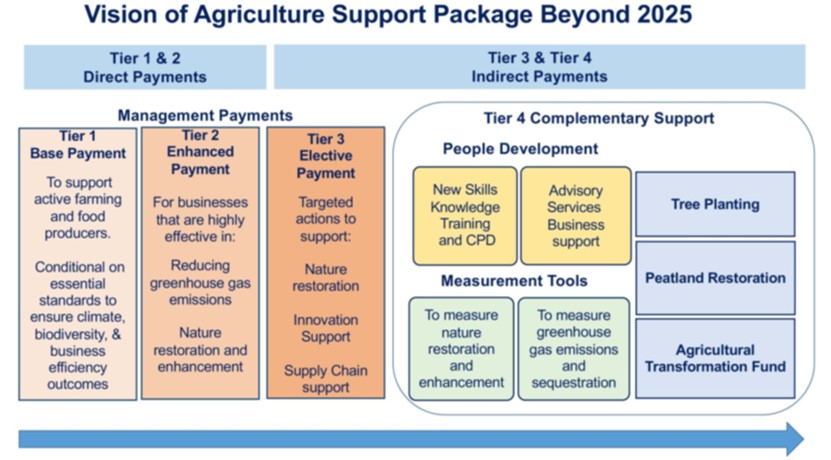Scotland sticking close to Europe - acting on emissions and farmer incomes
Thursday, 13 October 2022
Following our recent article on Welsh agricultural policy, this article explores the developments in Scottish agricultural policy.
Current Scottish agricultural policy (Scottish Vision of Agriculture) seeks to promote regenerative and sustainable farming, and closely aligns with new European Union (EU) measures and policy developments beyond 2025.
The Scottish policy aims to:
- Ensure fair income for farmers,
- Act on climate change and biodiversity loss,
- Produce high quality food,
- Foster innovation and knowledge.
The 2020 Retained EU Law bill retains the simplicity and stability of Common Agricultural Policy (CAP) payments for Scottish farmers. It allowed the modification of CAP legislation by Scottish ministers, and they set ceilings on the amount and allocation of payments.
Payment schemes
The Scottish Government plans to evolve the payment scheme, providing more flexibility on the distribution of payments. It involves the tapering and capping of payments based on four tiers.

Source: ‘Delivering our Vision for Scottish Agriculture’ Scottish Government
The first two tiers are direct payments, at a base level (tier 1), and enhanced level (tier 2). These payments are available to all farmers who meet eligibility criteria.
- Tier 1 provides income support for farmers, which is conditional on standards being met. These standards include basic sustainability and resilience criteria, such as climate and biodiversity.
- Tier 2 moves beyond the base level to additional criteria being met. These relate to sustainable and regenerative farming practices that would help Scotland reduce its environmental emissions and restore nature.
Tiers 3 and 4 move to an elective payment system. These both involve the use of targeted and specific measures. These payment systems differ from Tiers 1 and 2 as they are not direct payments. They are competitive support schemes, in which farmers must bid for applications for payments.
- Tier 3 provides payments based on specific locations and skills that should be developed. This encourages the development of skills and knowledge of farmers to become more environmentally friendly.
- Tier 4 builds on Tier 3 - providing payments to develop specific sectors. One of these payments includes voluntary coupled support (VCS) in the beef and sheep sectors. This is because the sectors and locations of this production are economically or socially important to Scotland. Under this agreement Scottish Mainland and Highlands & Islands Sheep and Beef farmers would be paid for producing these animals.
Conclusions
Many objectives of the Scottish Vision of Agriculture align with goals in the English and Welsh agricultural policies. All these policies aim to restore nature into farming and reduce environmental emissions through payment schemes. However, there are also important differences.
The main difference is the use of Tier 1 payments. Direct payments for income support are being phased out in both Wales and England but are being retained in Scotland. This approach shows an alignment with EU agricultural policy and a divergence from the ‘public money for public goods’ approach.
Although packaged differently, Tier 2 of the Scottish policy appears similar to the English Sustainable Farming Incentive (SFI) and the Welsh Sustainable Land Management approaches. All of these pay farmers to improve their environmental impact. These similarities and areas of alignment reflect the importance of the environmental targets. The UK Government is committed to these targets under the Paris Agreement at the Conference of Parties (COP) 21 and COP 22.


